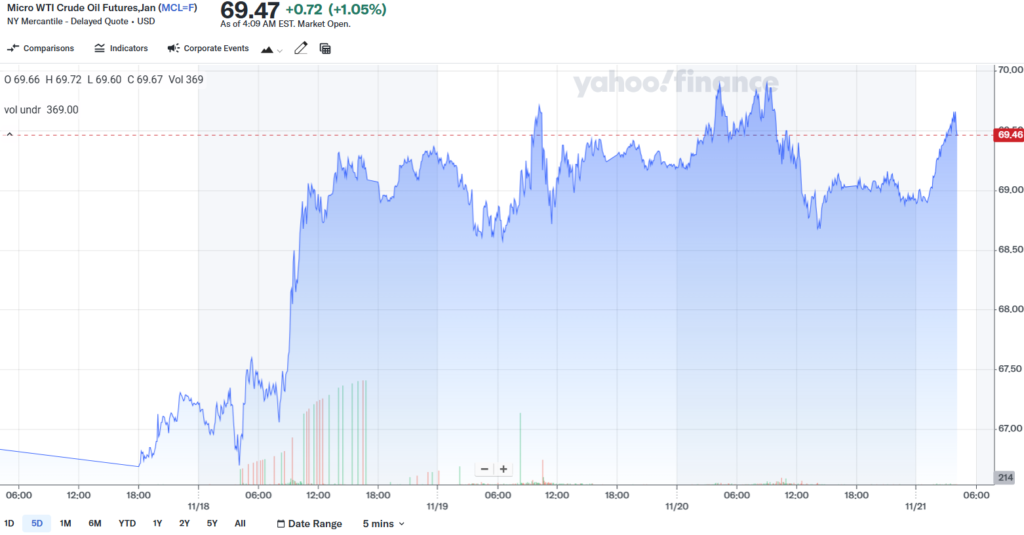Oil and its development

Traders are expecting an escalation of the Ukrainian conflict, leading to a rise in oil prices. Ukrainian forces have expanded the deployment of Western-supplied long-range weapons against Russian military targets. This development follows the newly revised nuclear doctrine announced by the Kremlin.
Oil prices rose even though US inventory data showed a significant increase. Brent crude traded above $73 a barrel on Wednesday, while West Texas Intermediate reached around $69 a barrel.
According to Tuesday’s report by the American Petroleum Institute (API), US crude inventories rose by 545,000 barrels last week, bringing the total to 4.753 million barrels. This increase in inventories would normally push prices down, but markets have focused more on geopolitical tensions and the risk of an escalation of war between Ukraine and Russia.

According to a report by the International Energy Agency (IEA), global oil stocks could exceed demand by more than 1 million barrels per day next year, a result of strong production growth in the US.
At the same time, market observers are pointing to signs of rising oil purchases by China, the world’s largest importer. China’s oil imports are on track to reach all-time highs or close to them before the end of November, according to Kpler vessel tracking data, said Alex Hodes, an energy analyst at StoneX.
The Organization of the Petroleum Exporting Countries (OPEC), meanwhile, cut its demand growth forecast for the fourth consecutive week on Tuesday.
Oil prices also fell by around 4% following the election of Donald Trump as US president, driven by a sharp strengthening of the dollar. A stronger dollar usually reduces demand for oil among buyers who use other currencies.